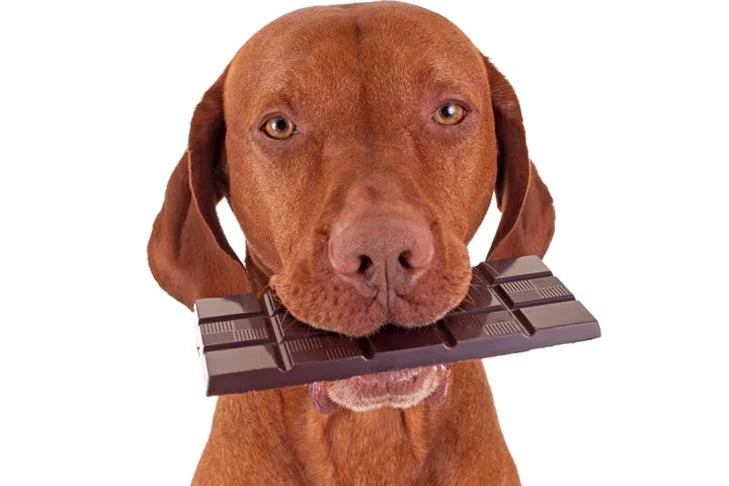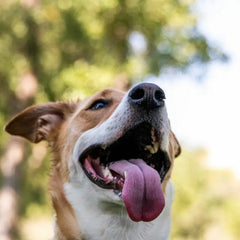Introduction
Chocolate is a cherished treat for many humans, often associated with comfort, celebration, and indulgence. But when it comes to our furry friends, the narrative around chocolate takes a starkly different turn. The question many pet owners grapple with is, "Can my dog eat chocolates?" This article delves deep into the cocoa conundrum to provide clarity and guidance.
The Bitter Truth about Chocolate
Chocolate, in all its delightful forms, is derived from the roasted seeds of the cacao plant. While it's a treat for humans, for dogs, it can be a dangerous, even deadly, substance. The culprits are two main components:
- Theobromine: This is the primary toxic component for dogs. It stimulates the central nervous system and cardiovascular system.
- Caffeine: Much like in humans, caffeine can be a stimulant. But dogs metabolize it much more slowly, leading to prolonged exposure and increased risks.
Types of Chocolate and Toxicity Levels:
Different chocolates have varying levels of theobromine and caffeine:
Type of Chocolate |
Theobromine Levels |
Caffeine Levels |
| White Chocolate | 0.1 mg/g | 0.05 mg/g |
| Milk Chocolate | 1.5 mg/g | 0.15 mg/g |
| Dark Chocolate | 16 mg/g | 0.58 mg/g |
| Cocoa Powder | 12-50 mg/g | 0.8-3 mg/g |
From the table, it's evident that dark chocolate and cocoa powder are the most toxic to dogs.
Symptoms of Chocolate Poisoning
The symptoms of chocolate poisoning in dogs can manifest within a few hours of consumption and can vary based on the amount and type of chocolate ingested.
Common Symptoms Include:
- Vomiting and Diarrhea: Often the first signs, sometimes with noticeable chocolate or wrappers.
- Restlessness: Affected dogs may seem jittery or agitated.
- Rapid Breathing: Indicative of an elevated heart rate.
- Increased Heart Rate: Can lead to arrhythmias in severe cases.
- Seizures: In extreme cases, dogs may have tremors or seizures.
- Muscle Rigidity: The dog may seem tense or unable to relax.
What to Do if Your Dog Eats Chocolate
If you suspect or know that your dog has consumed chocolate, immediate action is crucial.
- 1. Stay Calm: Panic won't help the situation. Act swiftly but calmly.
- 2. Determine the Amount and Type: If possible, find out how much and what kind of chocolate your dog consumed. This information can be invaluable for veterinarians.
- 3. Call a Veterinarian: Even if your dog seems fine, always consult a veterinarian. They might advise you to monitor your dog or bring them in immediately.
- 4. Do Not Induce Vomiting: Unless instructed by a professional, do not try to make your dog vomit at home.
- 5. Keep Chocolates Away: Prevention is always better than cure. Ensure all chocolates and cocoa products are stored well out of your dog's reach.
FAQs: Chocolate Concerns Cleared Up
1. Why can humans eat chocolate without issues, but not dogs?
Humans metabolize theobromine much faster than dogs, reducing the risk of toxicity.
2. How long after eating chocolate will a dog show symptoms?
Symptoms can manifest within 6 to 12 hours of ingestion, but it's essential to act immediately if you know or suspect your dog has eaten chocolate.
3. Are there any safe chocolate alternatives for dogs?
Yes, there are dog-safe chocolate alternatives available, often made from carob. Always ensure any treat is specifically labeled as safe for canine consumption.
4. Can a small amount of chocolate kill a dog?
While a tiny bit of milk chocolate might not be lethal for a large dog, even small amounts of dark chocolate or cocoa powder can be deadly. It's always best to err on the side of caution.
5. How can I prevent my dog from eating chocolate?
Store chocolates in high or locked cabinets, educate family members, especially children, about the dangers, and always supervise your dog during festive occasions when chocolates might be more accessible.
Conclusion
The allure of chocolate is undeniable for humans, but when it comes to our canine companions, this sweet treat can turn bitter. The key lies in awareness, vigilance, and timely action. By understanding the dangers and ensuring our homes are safe havens, we can ensure our dogs lead healthy, happy, and chocolate-free lives.




